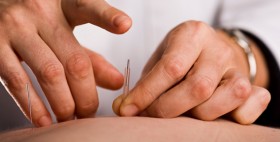
Japanese Acupuncture
I was curious about the difference between Japanese acupuncture and normal acupuncture so was happy to experience a session firsthand.
When I arrived for my Japanese acupuncture session we spoke about the different health issues in my life, and then she had me lie on the table while she first palpated my abdomen, which she said told her what she needed to know, and checked my pulses.
Root Treatment
This done we began what she called a ‘root treatment’, whereby the root cause of dis-ease is treated.
This, she said, alleviated 50% of symptoms before any symptomatic work is done. Then she placed some needles in my hands, arms, legs and feet.
Japanese Acupuncture is very gentle, the needles placed quite superficially. She then connected the needles with a copper cord which connect all the points worked that were being worked on.
This cord has a diode so the flow of ions is one way, and is one strong point of difference to traditional Chinese acupuncture.
I noticed a feeling of warmth and wellbeing spread throughout my body, and felt really relaxed when she left the room for a few minutes, very settled and content, in harmony.
When she returned she removed the needles and had me roll over. She then placed some more needles on my back, and legs, and some cups along and around my spine.
This was on the bladder meridian, along which are points for all the organs. I experienced quite strong sensations as the cups seemed to suck energy through the body to those points.
She also placed some moxa on the ends of the needles, which she burnt, and this heated my body far in excess of what I was expecting, so soon I felt really good.
This warms both needle and the meridians she said, and was more in line with a symptomatic treatment, which she says can alleviate chronic pain immediately. I didn’t have any such pain, so couldn’t check.
At the end of the treatment, after 1 1/2 hours, she placed some tiny needles in my ear which were to be left there for a week. They were taped on, and I then forgot about them. These were for my lungs, a weak point she told me.
For people with chronic pain there are “happy” points she puts those needles on, which takes away any pain.
When I stood up to go I felt really balanced and centered, happy to go out into the world again.
I liked this modality, and recommend Japanese acupuncture. Not better necessarily than Chinese acupuncture, just different.
By Mark O’Brien for the Here & Now magazine, Byron Bay, 2002
Share this review of Japanese acupuncture with your friends on Facebook.
Leave a Reply